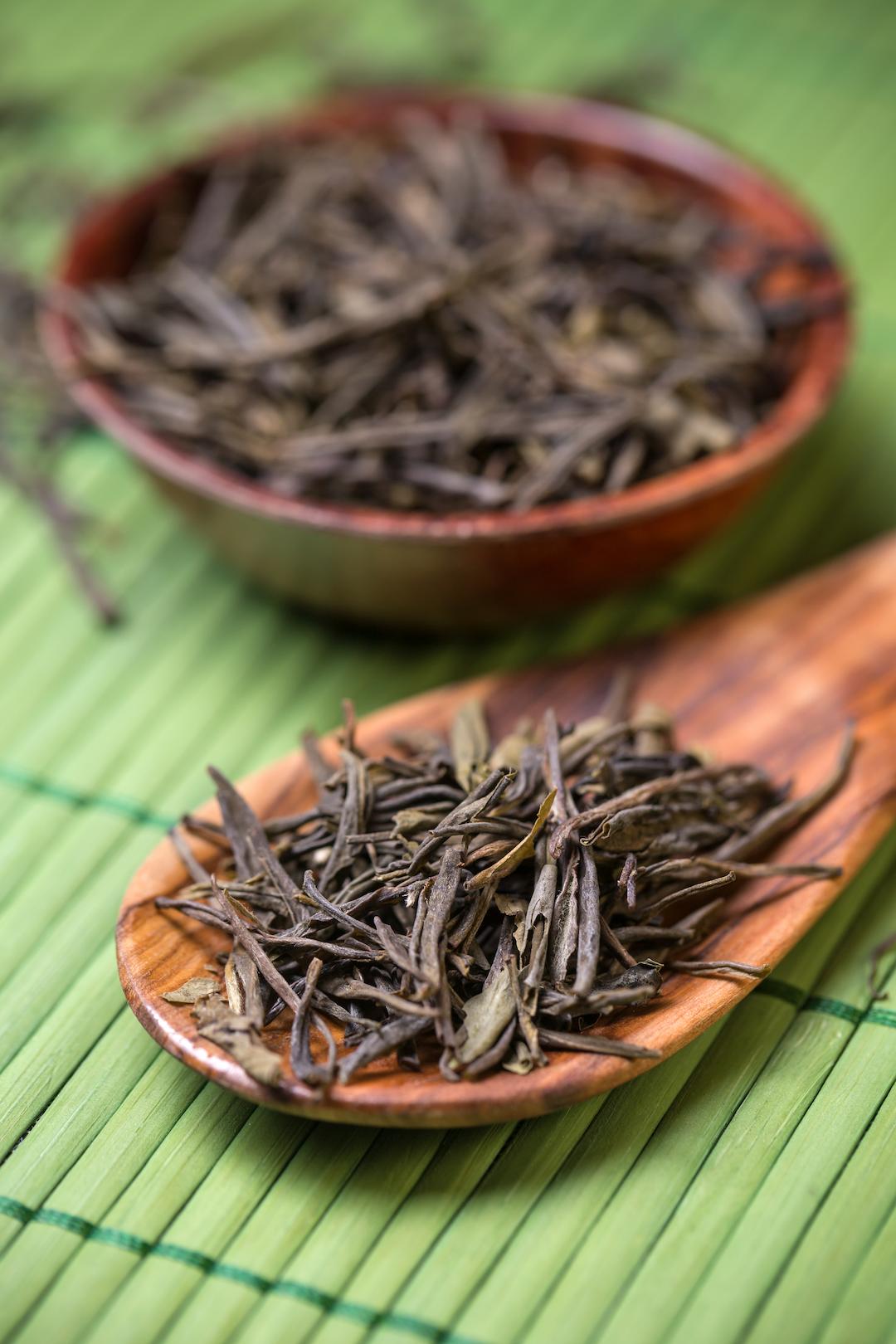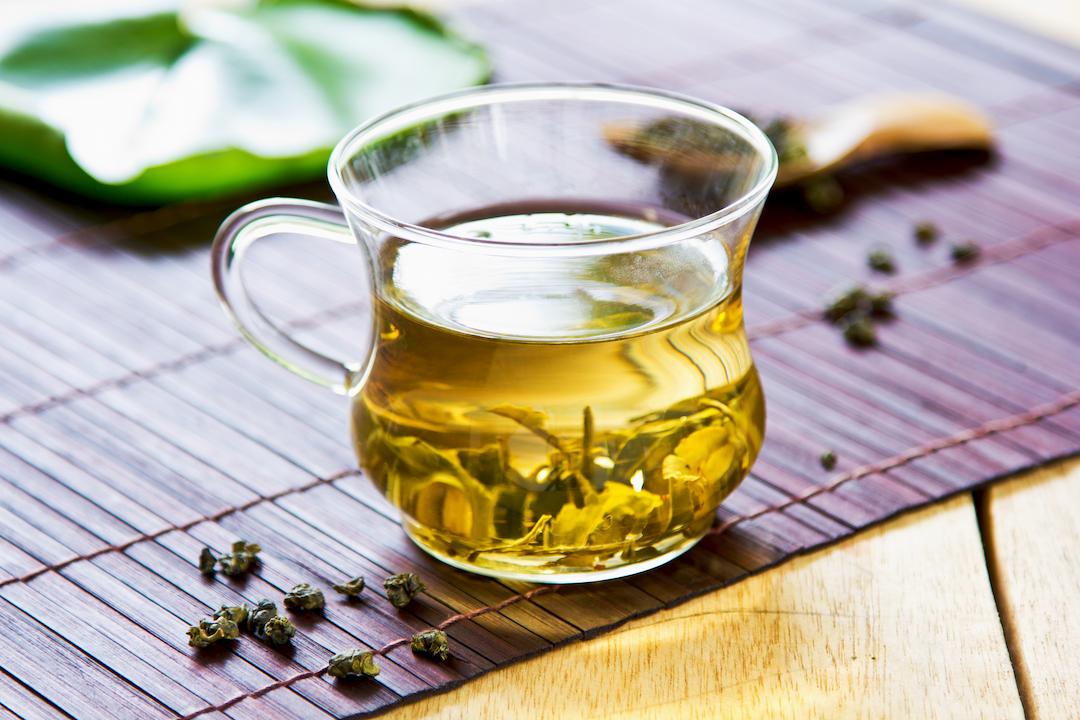Oolong Tea: Health Benefits & Brewing Guide
Posted by Elise Goldsworthy BHSc (Nutrition Science) on 15th Mar 2022
What is Oolong Tea?
Acts like a green tea, seems like a black tea, but it’s something in the middle. Oolong tea is a type of Chinese tea made from the camellia sinensis tea plant. It is one of the five true Chinese teas, together with green tea, white tea, black tea and pu-erh tea. Oolong tea is also known as Dark Dragon tea or Black Dragon tea due to the long, dark and curly shape of the tea leaves. It has characteristics and a flavour profile of both black tea and green tea. Oolong tea shares similar health-giving properties as well.
There are several varieties of oolong tea which differ depending on the area of cultivation and oxidation process involved. From light, floral and crisp oolong teas to a robust and earthy brew, there’s an option to suit almost anyone’s tea palate. What’s more, no matter what unique variety you choose, you get a host of health benefits as well in your hot cup of oolong tea.
Oolong Tea: Steeped in Chinese History
Whether this genesis story is true or not, the history of oolong tea is as rich as it's tasting notes. Legend has it that a farmer named Wu Liang (which later changed to Wu-long, then Oolong) developed oolong tea by complete accident. While working in the local tea fields, he was startled by a deer at the end of a long day of tea-picking. This caused him to flee for a short while until the coast was clear. When he returned to his tea leaves, he discovered they had changed colour due to the hot sun. They’d already begun to oxidise and thus oolong tea was created.
For centuries, oolong tea has been a major part of the Gongfu cha tea ceremony, enjoyed by aristocrats in the Fujian region of China. Here, a traditional Yixing teapot is used to brew and serve the tea. 3 Pimming cups accompany the pot as each recipient enjoys a fragrant and refreshing oolong tea.
Oolong Tea: Production & Cultivation
In China, there are two main regions for oolong tea cultivation. These are the Wuyi Mountains and the Anxi. The Wuyi Mountain area produces some of the most expensive and desirable oolong teas, with most of their production organic. There are also smaller oolong tea producers in the Guangdong Province as well as in Taiwan.
Oolong tea leaves begin as plucked green tea (camellia sinensis) leaves. Once they are harvested, they are moved to a facility for semi-oxidation. This causes the leaves to dehydrate and wither slightly, as the degrading enzymes within the tea leaves interact with oxygen in the air, causing oxidation. The result is a long, dark tea leaf which is somewhere between green tea and black tea.
 The rate of oxidation for oolong teas can be anything between 8-80% depending on the end product and manufacturer. Once the last degree of oxidation has been reached, the process is finalised with heat to preserve the leaves. Oolong tea leaves are sold either as loose leaf, spindles, pearls or in tea bags to consumers. Each resultant tea will vary from each other, depending on how much oxidation the tea has gone through.
The rate of oxidation for oolong teas can be anything between 8-80% depending on the end product and manufacturer. Once the last degree of oxidation has been reached, the process is finalised with heat to preserve the leaves. Oolong tea leaves are sold either as loose leaf, spindles, pearls or in tea bags to consumers. Each resultant tea will vary from each other, depending on how much oxidation the tea has gone through.
Chinese Tea masters grade and sell some varieties of oolong tea as premium blends. Because oolong is so versatile in it’s flavour profile, it’s often paired and blended with other teas. This creates a unique and delicious new tea to enjoy. Russian Caravan Tea is a blend of oolong, lapsang souchong and keemun teas, giving a smokey, smooth and aromatic tea.
Flavour & Aroma
Each sub-variety of oolong tea will provide a different flavour profile. This is due to the level of oxidation each tea undergoes. Lightly oxidised oolong teas are usually lighter, slightly sweeter with some floral or honey undertones. Heavily oxidised oolong teas are more robust, leaning closer to a black tea in richness and depth of flavour.
The areas of cultivation also have a role to play in the final flavour and aroma of an oolong tea variety. High altitudes, such as those in the Wuyi Mountain, provide teas that are stronger with toasted flavours. Oolong teas cultivated around grassy areas closer to sea level are usually lighter and more delicate.
Health benefits of Oolong Tea
Oolong tea possesses similar health benefits to those of green and black tea. Oolong tea has a high level of antioxidants, slightly below that of green tea. In terms of health benefits, oolong tea can mostly be considered similar to green tea. It has immunomodulatory, antimicrobial, antioxidant, and anti-inflammatory properties.
There are more than 100 chemical compounds in oolong tea that are postulated to have immense health benefits. Oolong tea can help with weight loss, managing diabetes symptoms and preventing cancer. There’s also evidence to support oolong tea in preventing cardiovascular disease.

Oolong Tea Improves Sensory & Motor Function
According to some emerging research, people diagnosed with Autism have lower levels of the inhibitory neurotransmitter, GABA. Oolong tea is a valuable food-source of L-theanine, which stimulates GABA receptors in the brain. Because of this trait, L-theanine can feasibly act as a GABA substitute, eliciting similar neurochemical effects.
A preliminary study conducted in 2021 observed the effects of oolong tea extract and its impact on brain function in a group of children with Autism. The results showed that anxiety, manual dexterity and balance were all improved in the 9 children involved in the study. This is a promising finding for oolong tea, its benefits on brain health and as a potential therapy for Autistic kids.
Oolong Tea & Weight Loss
An interesting study compared the effects of black, green and oolong tea on weight loss. The results showed that oolong tea was the most beneficial weight loss agent. While all tea varieties in the study influenced metabolism, oolong tea had the strongest influence on weight loss.
Oolong Tea Is Cardioprotective
The polyphenol content in oolong tea accounts for its heart-healthy qualities. The epigallocatechin gallate (EGCG) compound helps lower the risk of heart disease and provides natural anti-inflammatory properties. Oolong tea has also shown to be beneficial in maintaining healthy blood pressure. According to a long-term study, half a cup of oolong tea per day reduced the risk of high blood pressure by around 46%.
A small cross-over study was published in the Diabetes research and clinical practice journal. The results revealed beneficial effects of oolong tea on heart health. 1 month of oolong tea consumption improved diabetes symptoms and reduced the risk of atherosclerosis and cardiovascular disease.
Does Oolong Tea Contain Caffeine?
Like all teas made from camellia sinensis leaves, oolong tea contains a modest amount of caffeine, around 35mg per cup. This is significantly less than a standard cup of coffee, which can sit at around 200mg. The benefit of drinking oolong tea is similar to green tea in that it contains the calming compound, L-theanine. This not only provides a gentle sense of relaxation in the brain, it also balances out the wakeful feeling caused by caffeine. Oolong tea is a wonderfully balanced tea that helps you feel alert and calm at the same time.

How to Brew Oolong Tea
There’s the traditional Chinese method and the Western method when it comes to brewing oolong tea. The Western method, as you could probably guess, follows the steps akin to any green or black tea you know and love. As there are many types of oolong tea, there’s slight variations in each brewing method accordingly. Differing varieties, whether it’s loose leaf, tea bags or pearls you’re using - it all influences the steeping time and brewing technique. The below methods are a good guide to ensure you have an invigorating cup of oolong tea, every time.
Step 1: Prepare your tea leaves
Loose leaf or bagged, oolong tea can be brewed either way. For a more robust flavour and aroma, loose leaf is the way to go.
Step 2: Boil your water
For a single serve - steep 1 heaped tsp. oolong tea leaves (or 1 tea bag) in recently boiled water. The best temperature for oolong tea is similar to green tea, which is just below boiling (80-95°C).
Step 3: Steep your tea
Steep for 3-5 minutes and remove the tea bag once the desired intensity has been reached. Oolong teas that have been minimally oxidised require lower brewing temperatures. This is to preserve the natural fresh flavours and protect the delicate leaves from the high heat.
Traditional Chinese Methods:
Use a Yixing Pot
This pot is a traditional Chinese tea brewing pot made from clay. It’s specifically designed for oolong teas as well as black, white and pu-erh teas. The clay pot absorbs some of the tea upon each new steep, which causes the pot to change colour that matches your tea of choice. If you’re going to use a Yixing pot for tea-making, it’s best to have a dedicated pot for each individual tea type you use. This way, it’s a lovely ritualised and special pot, that keeps its colour and develops flavour thanks to the tea it houses. They don’t need to be washed either, just reuse at your next tea ceremony!
Use a Gaiwan
A gaiwan is another traditional Chinese brewing vessel, originating during the Ming dynasty. A gaiwan has a lid, no handles and a saucer with an opening at the top. These bowls are usually made of porcelain or glass and can be reused using different teas for different ceremonial occasions.
Whichever method you use, enjoying a cup of oolong tea is a delightful and fragrant joy. Boasting gentle, uplifting floral notes, with a rounded finish, oolong tea is not a tea to be missed.
References
Hannant P, Cassidy S, Renshaw D, Joyce A. A double-blind, placebo-controlled, randomised-designed GABA tea study in children diagnosed with autism spectrum conditions: a feasibility study clinical trial registration: ISRCTN 72571312. Nutr Neurosci. 2021 Jan;24(1):45-61. doi: 10.1080/1028415X.2019.1588486. Epub 2019 May 6. PMID: 31060476.
Ng, K. W., Cao, Z. J., Chen, H. B., Zhao, Z. Z., Zhu, L., & Yi, T. (2018). Oolong tea: A critical review of processing methods, chemical composition, health effects, and risk. Critical reviews in food science and nutrition, 58(17), 2957–2980. https://doi.org/10.1080/10408398.2017.1347556
Shimada, K., Kawarabayashi, T., Tanaka, A., Fukuda, D., Nakamura, Y., Yoshiyama, M., Takeuchi, K., Sawaki, T., Hosoda, K., & Yoshikawa, J. (2004). Oolong tea increases plasma adiponectin levels and low-density lipoprotein particle size in patients with coronary artery disease. Diabetes research and clinical practice, 65(3), 227–234. https://doi.org/10.1016/j.diabres.2004.01.003
Sun, L., Xu, H., Ye, J., & Gaikwad, N. W. (2019). Comparative effect of black, green, oolong, and white tea intake on weight gain and bile acid metabolism. Nutrition (Burbank, Los Angeles County, Calif.), 65, 208–215. https://doi.org/10.1016/j.nut.2019.02.006
Wikipedia Contributors. (2022, March 11). Oolong. Retrieved from Wikipedia website: https://en.wikipedia.org/wiki/Oolong, viewed March 11, 2022
Yang, Y. C., Lu, F. H., Wu, J. S., Wu, C. H., & Chang, C. J. (2004). The protective effect of habitual tea consumption on hypertension. Archives of internal medicine, 164(14), 1534–1540. https://doi.org/10.1001/archinte.164.14.1534
